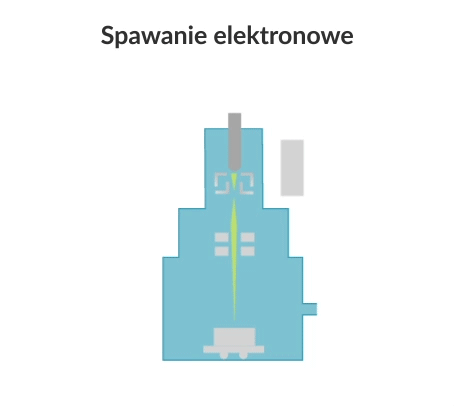Electron-beam welding is a welding process in which electrons are generated by an electron gun and accelerated to high speeds by electric fields. This high-speed electron beam is focused using magnetic fields and applied to the materials to be joined. The electron beam generates kinetic heat as it strikes the workpieces, causing them to melt and join.

Electron-beam welding
Type of technology
Development phase
Level of innovation
Scale of production
mass
Technology readiness level TRL
Description of the technology
Purpose of use
joining various materials
Industry usage
aerospace industry, energy (including nuclear power) industry, automotive industry, offshore industry, shipbuilding industry
Alternative technologies
Visualisation of action
Advantages
- provides a high-quality surface finish
- high accuracy
- can be used for small-diameter products
- higher melting point for some materials
- any material can be machined
- it does not generate heat at the welding point (instead the material is melted using electrons)
Disadvantages
- high cost of equipment and consumables
- not suitable for thin metal sheet
- low speed compared to other methods
- time required for adequate preparation prior to welding
- for use by qualified personnel only
Workpiece material types
- all material groups
- ferrous metals
- non-ferrous metals
- non-ferrous metals alloys
Examples of products
- copper hairpin pins (part of drive stators in electric cars)
- batteries
- cooling systems
- gear wheels
- jet engines
Implementation of the technology
Required resources
- vacuum generator
- electron beam gun
Required competences
- high operator qualification
- machine tools with a special head
Environmental aspects
Expert evaluation
Development centers
- AGH University of Krakow
- Opole University of Technology
- Institute of Metallurgy and Materials Science of Polish Academy of Sciences
- Warsaw University of Technology
- Cracow University of Technology
Legal conditions
- none
